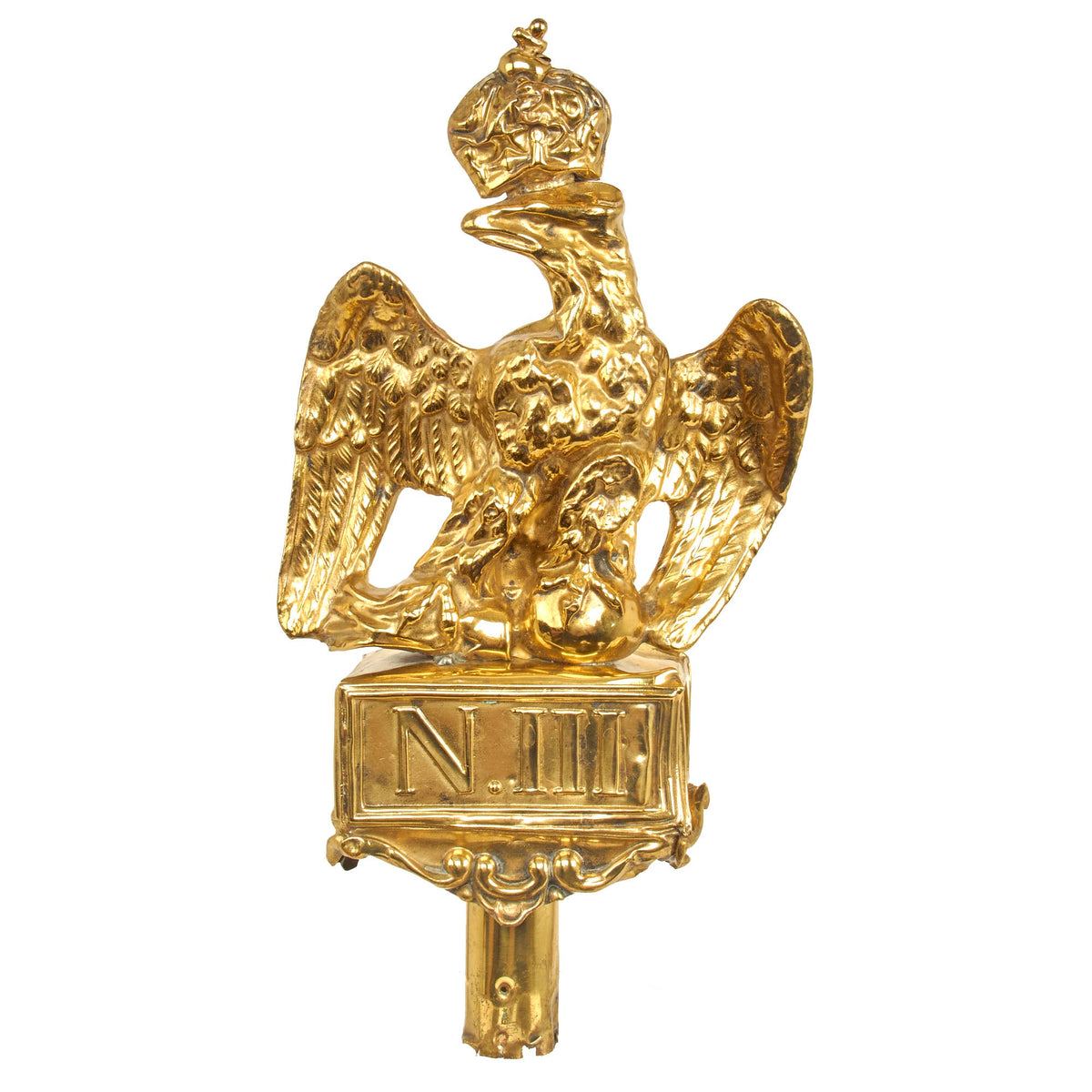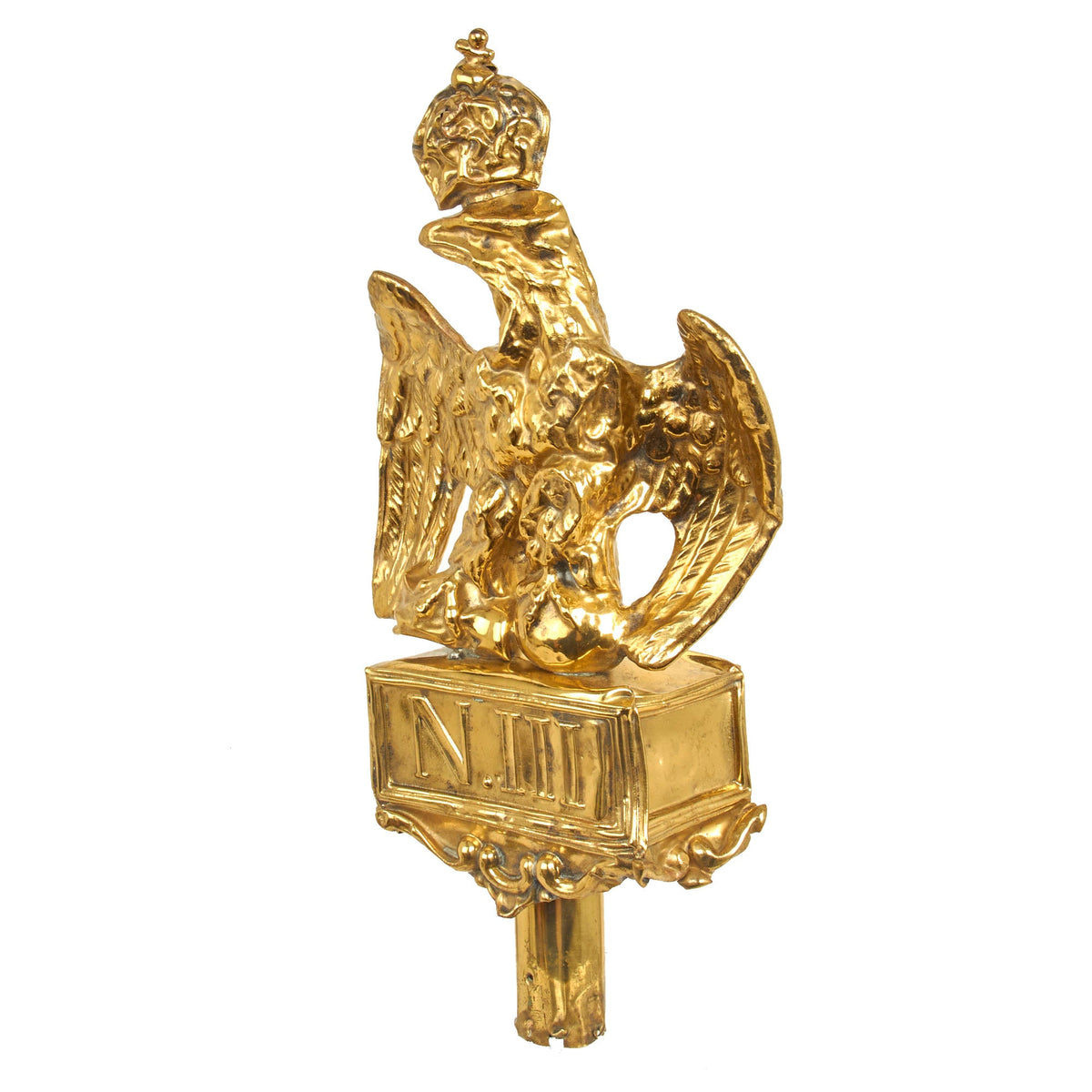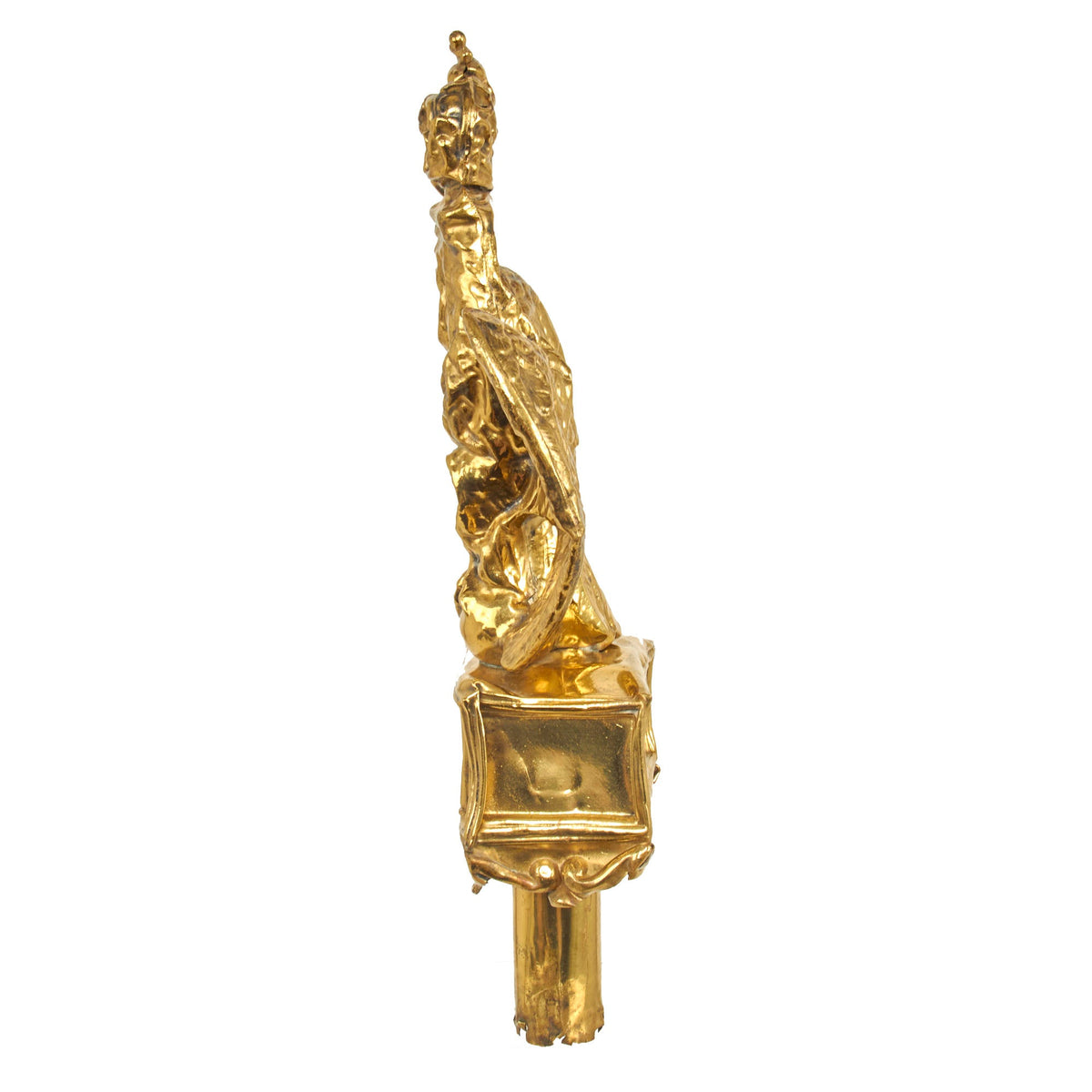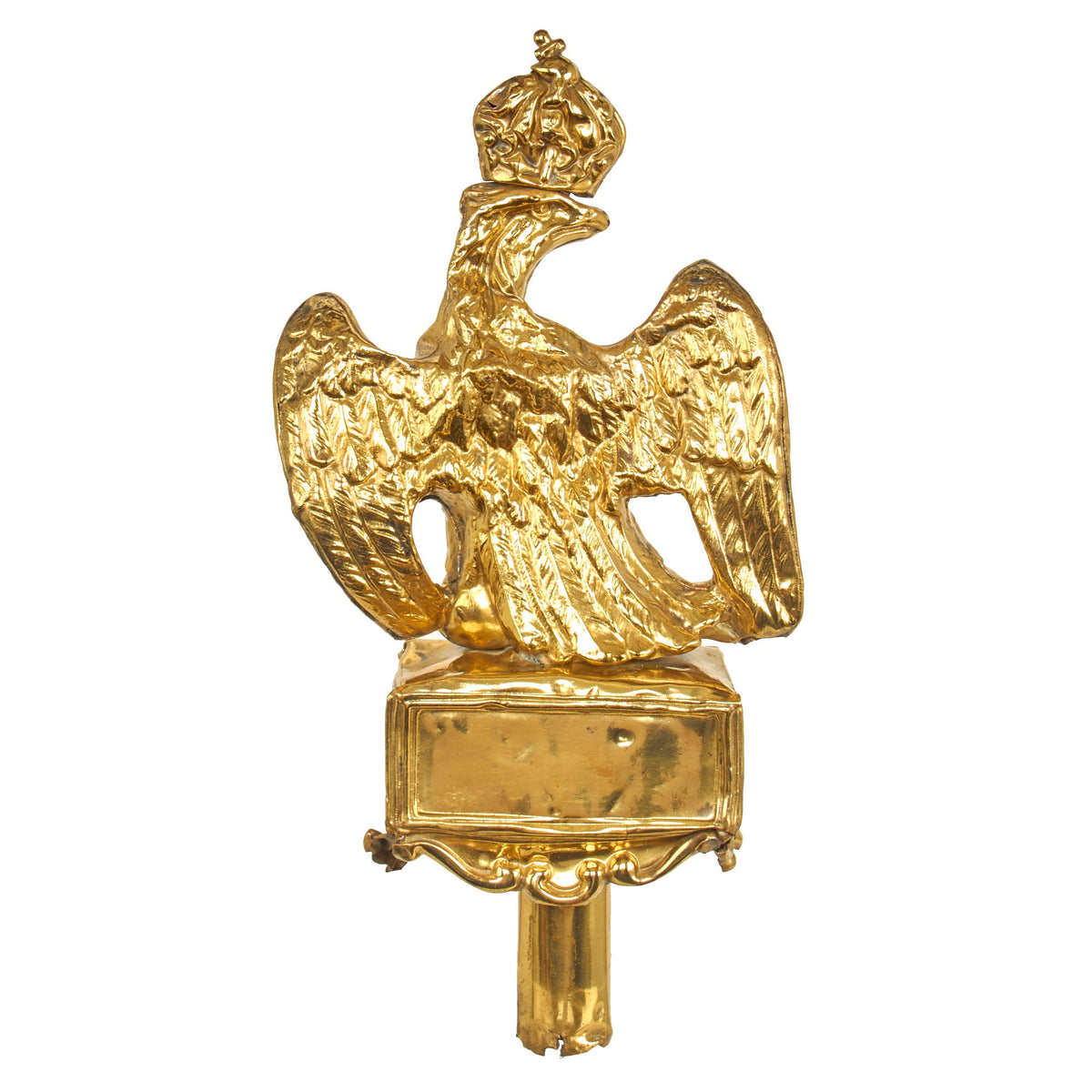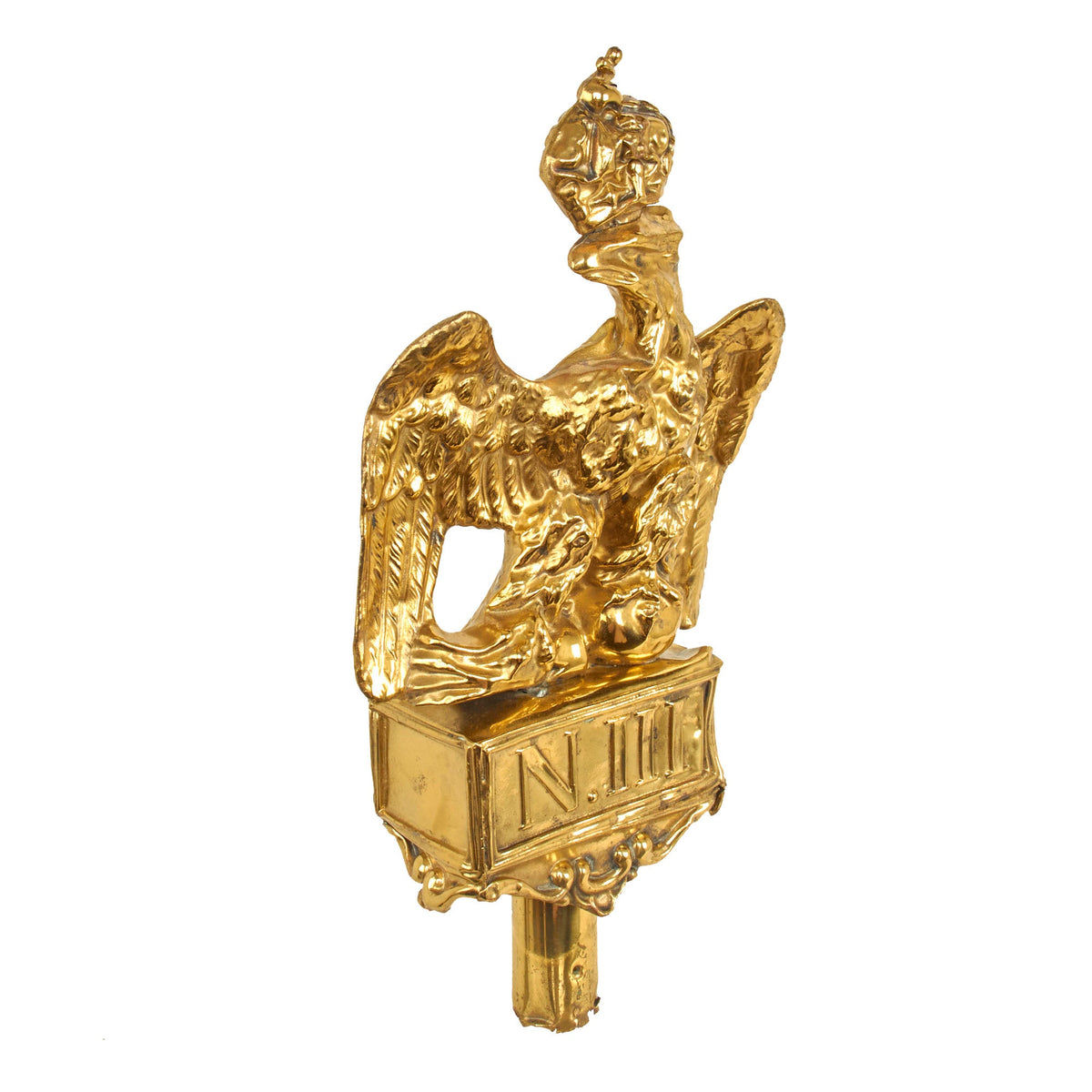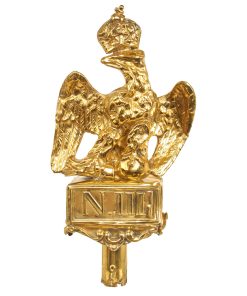Original France Crimean War Era Napoleon III French Imperial Eagle Brass Flag Pole “Topper” Original Items
$ 995,00 $ 248,75
Original Item: Only One Available. Now this is a lovely piece of French history! This is a fantastic example of a Napoleon III Imperial French Eagle which would have sat at the top of a flag pole. The condition is rather excellent due to the fact that it was constructed out of thin brass sheet material.
The French Imperial Eagle refers to the figure of an eagle on a staff carried into battle as a standard by the Grande Armée of Napoleon during the Napoleonic Wars.
Although they were presented with regimental colors, Napoleon’s regiments tended to carry at their head the Imperial Eagle.
This example measures approximately 12” x 6” and is offered in wonderful condition. There are some dents, bends and folds present, but that is expected with thin metal material. The hole for the actual pole is a little misshapen but does appear able to still be mounted on a pole if you would wish to do so.
A lovely example ready for further research and display.
On 5 December 1804, three days after his coronation, Napoleon distributed aigles based on the eagle standards of the Roman legions. The standards represented the regiments raised by the various departments of France, and were intended to institute feelings of pride and loyalty among the troops who would be the backbone of Napoleon’s new Imperial regime. Napoleon gave an emotional speech in which he insisted that troops should defend the standards with their lives. This event was depicted in The Distribution of the Eagle Standards, an 1810 painting by Jacques-Louis David.
The original design was sculpted by Antoine-Denis Chaudet and then copies were cast in the workshop of Pierre-Philippe Thomire, with the first eagles presented on 5 December 1804. It was a bronze sculpture of an eagle on a plinth, with one claw resting on “Jupiter’s spindle”. weighing 1.85 kg (4 lb), mounted on top of the blue regimental flagpole. They were made from six separately cast pieces designed along Roman lines and, when assembled, measured 310 mm (12 in) in height and 255 mm (10 in) in width. On the base would be the regiment’s number or, in the case of the Imperial Guard, Garde Impériale. The eagle bore the same significance to French Imperial regiments as the colors did to British regiments – to lose the eagle would bring shame to the regiment, who had pledged to defend it to the death. Upon Napoleon’s fall, the restored monarchy of King Louis XVIII ordered all eagles to be destroyed; only a very small number were preserved. When the former emperor returned to power in 1815 (known as the Hundred Days), he immediately had more eagles produced, although the quality did not match the originals. The workmanship was of a lesser quality and the main distinguishing changes had the new models with closed beaks and they were set in a more crouched posture.
Fast Shipping with Professional Packaging
Thanks to our longstanding association with UPS FedEx DHL, and other major international carriers, we are able to provide a range of shipping options. Our warehouse staff is expertly trained and will wrap your products according to our exact and precise specifications. Prior to shipping, your goods will be thoroughly examined and securely secured. We ship to thousands clients each day across multiple countries. This shows how we're dedicated to be the largest retailer on the internet. Warehouses and distribution centres can be located throughout Europe as well as the USA.
Note: Orders with more than one item will be assigned a processing date depending on the item.
Before shipping before shipping, we'll conduct a thorough inspection of the items you have ordered. Today, the majority of orders will be delivered within 48 hours. The delivery time will be between 3-7 days.
Returns
The stock is dynamic and we cannot completely manage it because multiple stakeholders are involved, including our factory and warehouse. So the actual stock may alter at any time. It's possible that you may not receive your order once the order has been made.
Our policy is valid for a period of 30 days. If you don't receive the product within 30 days, we are not able to issue a refund or an exchange.
You can only return an item if it is unused and in the same state as the day you received it. You must have the item in its original packaging.
Related products
Uncategorized
Angolan Rebel 1970s era 60mm Inert Display Mortar from Angolan Civil War Original Items
Uncategorized
Uncategorized
Uncategorized
Uncategorized
Uncategorized
Uncategorized
Uncategorized
Uncategorized
Uncategorized
Australian WWII Owen MK1 Machine Carbine SMG Custom Fabricated Replica with Sling Original Items
Uncategorized
Uncategorized
Uncategorized
Uncategorized
